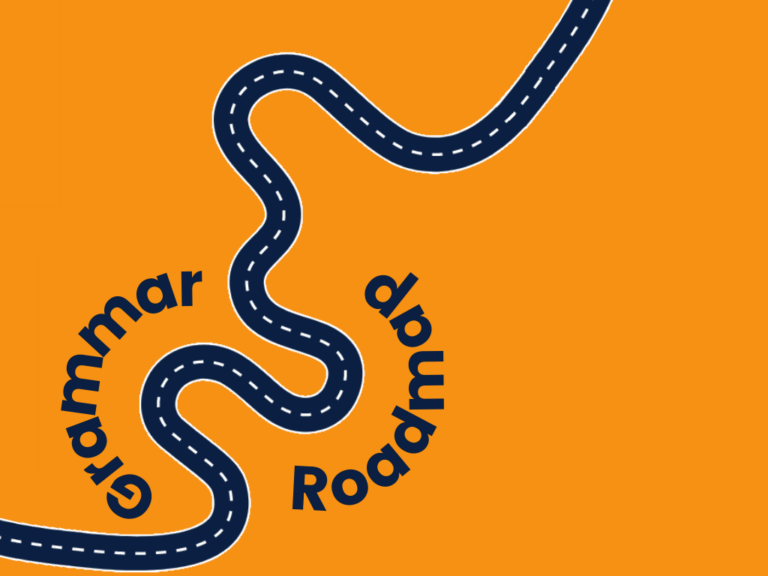
The Subjunctive
Mood Roadmap
Welcome to the Subjunctive Mood Roadmap! The purpose of this roadmap is to guide you through a methodical process to improve your knowledge of the subjunctive mood, one step at a time.
No matter which stage of the journey you’re already at, simply follow the steps to learn, develop and excel in your ability to apply grammar rules and exceptions with ease.
KEY:
Present tense grammar is highlighted in red.
Future tense grammar is highlighted in orange.
Past tense grammar is highlighted in yellow.
Conditional tense grammar is highlighted in green.
Imperative mood grammar is highlighted in blue.
Subjunctive mood grammar is highlighted in purple.
Passive voice grammar is highlighted in white











¡VAMOS!
The Grammar Roadmap is a work in progress so please bear with us.
1. Present Subjunctive (Presente de Subjuntivo):
- Begin by explaining the concept of the present subjunctive mood and its usage to express doubt, uncertainty, wishes, desires, and emotions.
- Teach the formation of the present subjunctive for regular -ar, -er, and -ir verbs, including the stem and endings.
- Introduce common irregular verbs in the present subjunctive and their irregular stems and endings.
- Provide examples of using the present subjunctive in various contexts, such as hypothetical situations, requests, and doubts.
2. Present Subjunctive vs. Indicative:
- Compare and contrast the present subjunctive with the indicative mood to understand when to use each mood appropriately.
- Explain the situations and triggers that require the use of the subjunctive over the indicative, such as expressions of doubt, uncertainty, emotion, and desire.
- Provide examples and exercises to reinforce the correct use of the present subjunctive and distinguish it from the indicative.
3. Subjunctive with Impersonal Expressions:
- Teach how to use the subjunctive with impersonal expressions, such as “es importante que,” “es necesario que,” “es mejor que,” etc.
- Explain why these expressions trigger the subjunctive mood, emphasizing their uncertain or subjective nature.
- Provide examples and exercises to practice using the subjunctive with impersonal expressions.
4. Subjunctive with Emotions and Desires:
- Show how the subjunctive is used to express emotions, wishes, desires, and hopes.
- Teach common phrases that require the subjunctive, such as “quiero que,” “espero que,” “me alegro de que,” etc.
- Provide examples and exercises to practice using the subjunctive with emotions and desires.
5. Subjunctive with Recommendations and Requests:
- Explain how to use the subjunctive with expressions of advice, recommendations, and requests.
- Teach phrases like “recomiendo que,” “prefiero que,” “pido que,” etc.
- Provide examples and exercises to practice using the subjunctive with recommendations and requests.
6. Subjunctive in Noun Clauses:
- Introduce the concept of noun clauses and their connection to the subjunctive mood.
- Teach how to use the subjunctive in noun clauses after verbs of influence, doubt, and denial.
- Provide examples and exercises to practice using the subjunctive in noun clauses.
7. Subjunctive with Conjunctions and Connectors:
- Teach how to use the subjunctive with conjunctions and connectors, such as “a menos que,” “antes de que,” “sin que,” etc.
- Explain why these conjunctions trigger the subjunctive, as they indicate an uncertain or hypothetical outcome.
- Provide examples and exercises to practice using the subjunctive with conjunctions and connectors.
8. Subjunctive in Adjective Clauses:
- Explain how to use the subjunctive in adjective clauses that describe indefinite, non-specific, or non-existent entities.
- Teach phrases like “busco a alguien que,” “necesito un lugar que,” etc.
- Provide examples and exercises to practice using the subjunctive in adjective clauses.
9. Imperfect Subjunctive (Pretérito Imperfecto de Subjuntivo):
- Introduce the concept of the imperfect subjunctive and its usage to express hypothetical or uncertain actions in the past.
- Teach the formation of the imperfect subjunctive for regular -ar, -er, and -ir verbs, including the stem and endings.
- Introduce common irregular verbs in the imperfect subjunctive and their irregular stems and endings.
- Provide examples of using the imperfect subjunctive in various contexts, such as hypothetical situations in the past.
10. Imperfect Subjunctive vs. Present Subjunctive: – Compare and contrast the imperfect subjunctive with the present subjunctive to understand when to use each tense in different contexts. – Provide examples and exercises to reinforce the correct use of the imperfect subjunctive.
All about the two verbs for “to be” in Spanish: Ser and Estar.
All about the two verbs for “to be” in Spanish: Ser and Estar.
All about the two verbs for “to be” in Spanish: Ser and Estar.
All about the two verbs for “to be” in Spanish: Ser and Estar.
All about the two verbs for “to be” in Spanish: Ser and Estar.
All about the two verbs for “to be” in Spanish: Ser and Estar.
All about the two verbs for “to be” in Spanish: Ser and Estar.
All about the two verbs for “to be” in Spanish: Ser and Estar.
Absolutely everything you need to know about nouns for everyone from absolute beginner to advanced expert.
Learn to improve your Spanish using a range of time phrases in a range of different contexts
Absolutely everything you need to know about nouns for everyone from absolute beginner to advanced expert.




